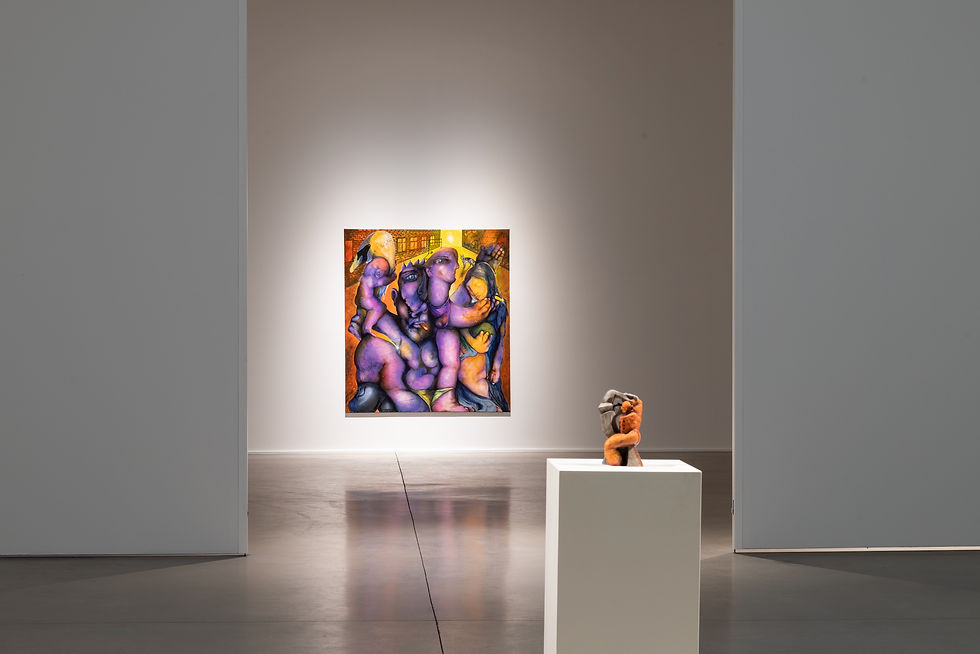

Jan 23 - Mar 02, 2025 | Genk (BE)
The exhibition recounts the narrative of maturation. Szaweł Płóciennik reminisces about his boyhood and recounts the transformations that occurred in his mind and body as he matured. The hero's transformation is paralleled by the world's transformation in this narrative. The series of works is a form of private mythology. The images may visually invoke surrealism, but they are firmly grounded in reality, and the extraordinary is the result of memory's deformations. The subtle influence of individual affects erodes the monolithic structure of social modernist complexes of apartments and housing machines. Machines for Life is an exhibition that explores the power of a story to rescue an individual in a dehumanized world, the emotions and clumsiness that emerge in contrast to the soulless rhythm of windows, and the life that strays from the pattern.
The “Machines for Living” exhibition focuses on the Behind the Iron Gate housing estate in Warsaw (1965–1972), once hailed as the city’s most beautiful, embodying the ideal of modernist living. Yet, systemic issues like water shortages, heating failures, and sewage problems disrupted this vision, revealing the flaws in the so-called living machines.
Over time, both the decline of socialism and early capitalist reforms caused these systems to falter. Life in one of the estate’s 300 identical apartments was marked by a tension between sameness and subtle difference. Though the blocks looked alike—like products from the same mold—each space carried unique sensory and emotional traces: different smells, habits, dreams, and human imprints.










